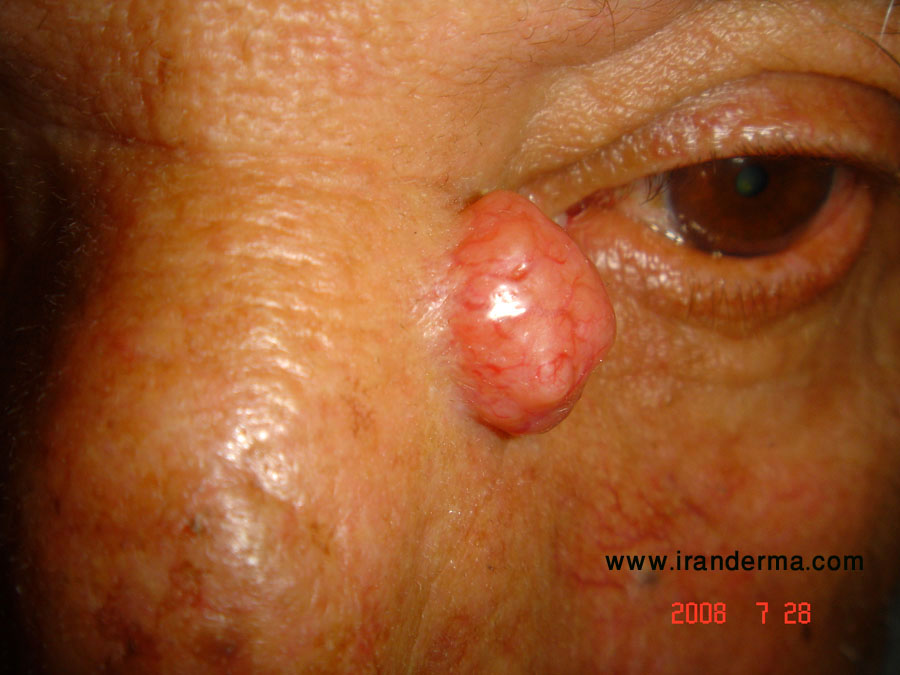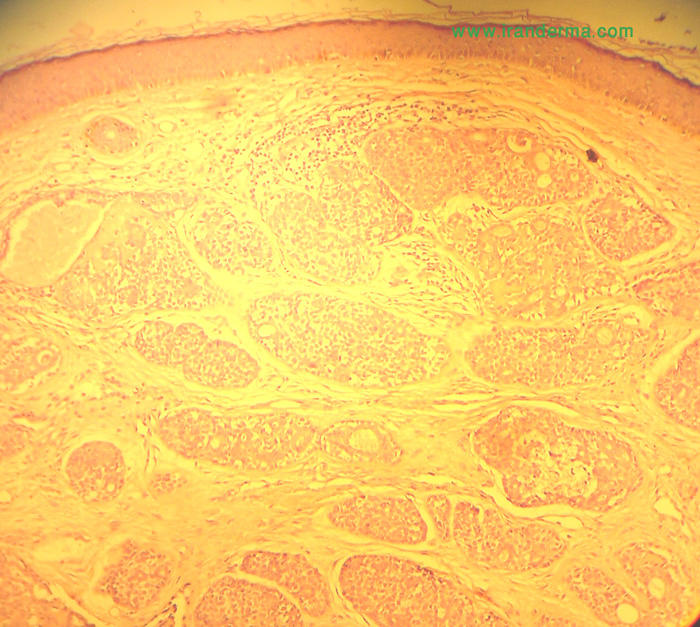|
Cylindroma is a benign tumour in which apocrine and
trichoepitheliomatous differentiation has been noted
indicating complex hair follicle (folliculo-sebaceous-apocrine)
rather than eccrine differentiation.
Clinical presentation:
Clinically, the tumour usually presents as a
solitary, slow growing rubbery lesion.
The multiple form is autosomal dominantly inherited on cyld1 gene
on chromosome 16. This form is also known as 'turban
tumour' and may be associated with spiradenoma. Some
of these lesions are painful. This condition is
associated with trichoepitheliomas and milia.
Site: Usually located on
the scalp, head and neck or trunk.
Microscopic features:
Histologically cylindroma is a circumscribed, non-encapsulated ,
dermal tumour without attachment to the epidermis .
The lesion is composed of numerous oval and
polygonal nests arranged in an interlocking
'jigsaw-like' pattern. There are two cell types, the
peripheral cells are small and basophilic
and central cells are larger and pale stained. Small
ductal lumina may be present. Thick PAS positive
hyaline bands surround tumour islands. Hyaline
droplets within nests.
Malignant Cylindroma:
Cylindromas occasionally undergo malignant transformation.
Malignant cylindromas are characterised by islands
of cells displaying marked nuclear pleomorphism.
There is increase in mitosis and many abnormal forms
are identified. The tumour shows invasion into the
surrounding tissue and loss of the delicate hyaline
sheath.
Treatment:
For solitary
lesions, the treatment of choice is surgical
excision. Other treatments include
electrodesiccation/curettage and cryotherapy.
Multiple
cylindromas usually require extensive plastic
surgery that may be obviated by progressively
excising a group of nodules in multiple procedures.
D.D:
include:
Other cutaneous adnexal neoplasms; Eccrine
spiradenoma,
......
Dr. Reza
Ghaderi, Associate Professor of Dermatology
|

